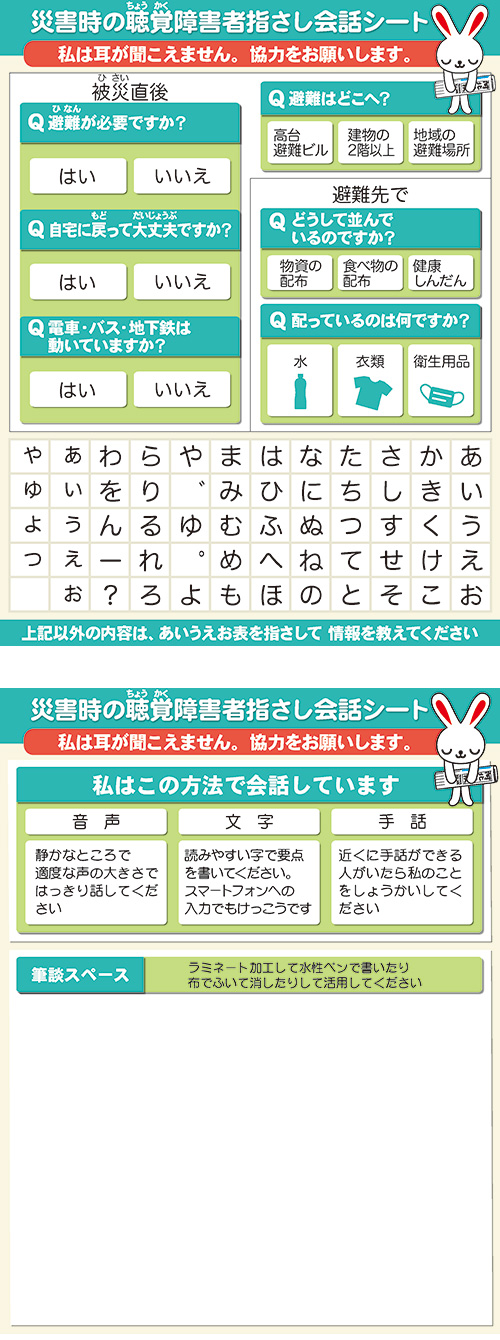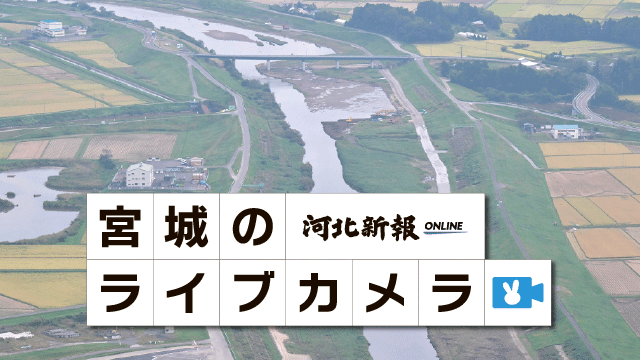Part 9: Preparations in the Workplace (4-End) Contributing to the Community / Staff Guidance Saves R




As community members, what could companies do during a disaster? One company saved residents during the Great East Japan Earthquake.
Immediately after the earthquake, neighborhood residents gathered at the Yayoi Foods Kesennuma Factory of Hamacho, Kesennuma City.
The factory, three stories or 13 meters high, was a tsunami evacuation center for the region. “Please go up to the third floor,” the workers called out, and swiftly began guiding the residents.
Many residents in the neighborhood are elderly. The staff led those who had difficulties walking by their hand, and climbed up the stairs. They carried up a bedridden woman on a stretcher.
By 3 p.m., the evacuation of 40 residents was complete. Around half an hour later, the tsunami rushed over the fishing port out front and reached up to the second floor, but everybody was safe.
The Yayoi Foods factory stands in a semi-industrial zone, where factories and private residences coexist. Occasionally, they would receive complaints against the exhaust fumes and noise. In 2004, the company opened its factory as a tsunami evacuation center, as a step towards successfully coexisting with the community. The company also began a joint evacuation training with three neighborhood councils, with more than 50 residents participating in each session. Young employees formed a “support team,” training for evacuation assistance of wheelchair users.
During the earthquake, Reiko Murakami (41) of the company’s General Affairs Division helped with evacuation guidance. She recounts, “There were many residents who had participated in the training, and were calmly taking action.” They distributed friend rice balls, a company product, and spent the night there. The next day, the employees led the residents to an evacuation center on higher ground, making their way through the debris.
Shiro Goto (58), unemployed and currently living in the city’s temporary housing facility, is one of the residents who evacuated to Yayoi Foods. He had participated in the training a few times, and ran in without hesitation. “My house was completely destroyed. I was saved because of Yayoi Foods,” he says thankfully.
The company employees also provided valuable manpower for the evacuation of vulnerable people.
Michihiro Kono (40), then managing director and current president of Yagisawa Shoten, a well-established miso and soy sauce brewery in Rikuzentakata City, felt the violent shaking and instinctively thought, “A tsunami is sure to come.”
He conducted a staff roll call, and instructed them to evacuate to Suwa Shrine in the back mountains. Kono and the staff called out to the elderly in the neighborhood, taking their hand and carrying them up the stairs. Almost 100 people evacuated to the shrine grounds.
Around 3:30 p.m. The waters of Kesen River overflowed, swallowing their factory and store. The water continued to rise. Kono called out, “This place is dangerous too, let’s go higher up.” The 20 members of the staff led the elderly by their hands and climbed up the steep incline behind the shrine. The tsunami did not reach the shrine grounds, but they had carried out the best possible course of action in that situation. The next day, the staff helped residents make their way to the evacuation center.
Last October, the company rebuilt its headquarters at an inland area of the city. “We will consider a new disaster contingency plan, including opening our office as an evacuation center during emergencies,” says Kono.
◎Opening office buildings for evacuation / The importance of continuing training with the residents
There are companies working on new community disaster prevention efforts, based on lessons from the damage caused by the Great East Japan Earthquake.
During the earthquake, many employees of the 207 companies at the Seafood Processing Center, Ishinomaki Fishing Port, drove back to their homes and ended up caught in traffic congestions and the tsunami waves. Seafood processing company “Taiko Suisan” took advantage of these lessons, and created an evacuation space on the third floor of their new building (15 meters high) as well as the roof (20 meters high), after resuming business in November last year.
The facility was built from heavy-duty steel frames with high durability. The company has around 50 employees, but the evacuation space could house 1100. It became the first privately owned tsunami evacuation building approved by the city. “Besides protecting our employees, we would like to save as many lives as possible,” says Shuya Take (55), company director.
Take had also encountered traffic congestion while driving home during the earthquake. He parked his car in a schoolyard that happened to open nearby and nearly reached home, when the tsunami rushed up behind him. He ran frantically, climbing up to the second floor of his house. There were no casualties among the Taiko Suisan employees, but Take was not the only employee who barely managed to escape.
The outer stairs of the company building, leading to the rooftop, is always open for evacuation. The company has also prepared supplies such as electricity generators and food. For a smaller enterprise, the financial burden of these preparations is not light. “The seafood industry is built on the cooperation of many, including those working in the market, raw material business, and transportation business. The recovery of the seafood industry will only progress in an environment where non-company employees could also work without anxiety,” Take says.
Almost 19 years have passed from the Great Hanshin Earthquake of January 17, 1995. Ever since the disaster, a company has been leading disaster prevention efforts in the community.
After the earthquake hit, 60 employees of the industrial belts manufacturer “Mitsuboshi Belt” in Nagata Ward, Kobe City, including the night shift staff, rushed to extinguish nearby fires at an early stage. The area was thus able to avoid large-scale destruction by fire. The company gymnasium housed 400 evacuees for nearly four months.
In order to pass down the experiences and lessons from the disaster, the company designated January 17 as “Mitsuboshi Belt Disaster prevention Day,” and conducted annual disaster prevention training with residents around this date. They also held yearly events celebrating the entrance of neighborhood children into elementary school, and established a face-to-face relationship with the residents.
As years pass and employees retire or transfer, the number of staff who experienced the disaster firsthand grows smaller. To prevent the fading of memories, the company conducts evacuation training once a month.
Kotaro Yasui (62), general affairs manager and Kobe branch chief, explains the values of placing disaster prevention and mitigation at the core of their management philosophy. “Continuing to make efforts towards disaster preparation builds trust in our company, and contributes to the education of our employees.”
The companies of the disaster-stricken areas from the 2011 earthquake also bear responsibility for long-term efforts towards community disaster prevention.
Translated by Anna Wada
December 2, 2013 (Mon.)
[Japanese] http://www.kahoku.co.jp/special/spe1114/20131202_01.html
みやぎ地域安全情報
宮城県警 みやぎセキュリティメールより
- 女性に対する不審者事案の発生【山元町】
- 特殊詐欺の予兆電話について(黒川郡大和町)
- 女性に対する盗撮事案の発生【青葉区】
- 女性に対するつきまとい事案の発生【大崎市】
- 特殊詐欺の予兆電話について(気仙沼市)
- オレオレ詐欺の特殊詐欺注意報(仙台市泉区)
- 刃物ようのものを持った男の目撃情報について(大崎市)
- オレオレ詐欺の特殊詐欺注意報(仙台市宮城野区)
- 特殊詐欺の予兆電話について(松島町)
- オレオレ詐欺の特殊詐欺注意報(仙台市太白区)
- オレオレ詐欺の特殊詐欺注意報(石巻市)
- 特殊詐欺の予兆電話について(蔵王町)
- 不審電話について(黒川郡大衡村)
- オレオレ詐欺の特殊詐欺注意報(登米市)
- オレオレ詐欺の特殊詐欺注意報(石巻市)
- 特殊詐欺の予兆電話について(仙台市泉区)
- 特殊詐欺の予兆電話について(加美郡加美町)
- オレオレ詐欺の特殊詐欺注意報(仙台市宮城野区)
- 特殊詐欺の予兆電話について(大崎市)
- オレオレ詐欺の特殊詐欺注意報(亘理郡亘理町)
- 女性に対するつきまとい事案の発生【大和町】
- 特殊詐欺の予兆電話について(仙台市泉区)
 朝刊・夕刊
朝刊・夕刊 記事を探す
記事を探す FAQ
FAQ







